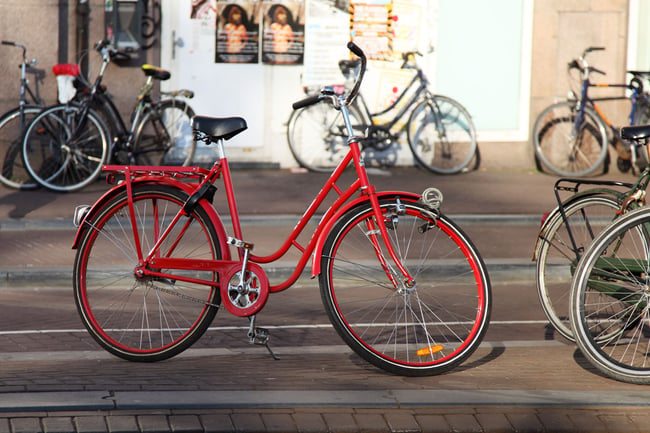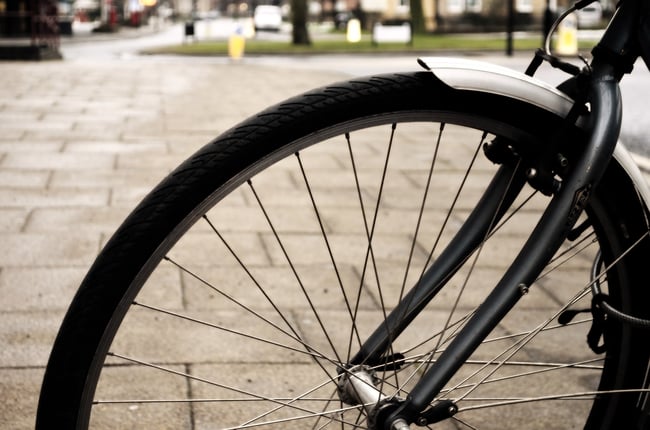Scura, Wigfield, Heyer, Stevens & Cammarota Blog
- Blog
If you Get into an Accident Riding a Bicycle, Will Insurance Help You?
Every cyclist’s worst fear is being struck by a car while on the road. They might do everything right, driving along the curb with a helmet, a bell, and a light source for night driving. None of that helps when one car jumps the curb and plows into their side. Impact can send a cyclist flying into the fences or tumbling under the wheels of their car. Fear floods the senses, so much that you might not notice your mangled bike or splintered femur. With a bike accident, the injuries are typically more severe because you have nothing to protect you when you are hit and sent to the ground.
In situations like this, one might be left unsure what to do. Car accidents are so widely discussed and so prevalent that everyone has an idea about what to do in such situations. However, when the rider of a bicycle is struck down on the road, the laws are often less clear and more confusing. What would a bicycle rider need to know before progressing further on the road? What concerns do they need to keep in mind when traveling, knowing full well their escapades on the road might terminate in a car accident? What insurance comes into play?
Pedestrians or Vehicles?

Bicycles are vehicles. Many would feel justified in assuming that bicycles, in the event they crash, are held to the same standards as other vehicles like cars or trucks. However, the truth is a little more complicated. Since cyclists are light-weight and limited in terms of their speed, they share many rights as pedestrians in traffic accidents.
The rights of a cyclist are similar to those of a pedestrian in New Jersey. Cyclists need to exercise caution when traveling. They need to make reasonable judgement on when to cross streets based on traffic activity or traffic signals/signs.
Based on these and how responsibly cyclists depend on the rules of transportation will determine whether you are responsible for any accidents that transpire. If you were to cycle across a walkway while cars have the green light and you abruptly cycle into the path of an oncoming vehicle having the ability to see the car coming, then you acted in a negligent manner and are responsible for whatever accident occurs. However, if a car speeds at you and you have little time to react or couldn’t possibly see them coming, then the driver acted irresponsibly and, thus, is responsible for the accident.
From there, any damages that might be incurred would be exchanged based on the typical procedures of vehicular accidents. The driver of the vehicle at fault would have to pay for damages. It is vital that you document any injuries or damages to either your property or body in the immediate aftermath of the accident. You should also save the damaged bike for evidence even if it is damaged beyond repair.
However, let’s say either the person responsible does not have insurance, you are at fault, the accident dealt with mechanical failure of the vehicle, or you are the victim of a hit-and-run and thus are unable to determine the identity of your attacker. Let’s discuss your options.
Mechanical Failure
Vehicular operators can be held responsible for some problems that might arise if their vehicles encounter issues. If an accident occurs due to mechanical failure and the operator of the malfunctioned vehicle knew there was an issue, they are responsible. If the failure occurred in a way the vehicle operator could not reasonably anticipate, then mechanical failure does not put the operator of the vehicle inherently at fault. Then, you may want to look at the last mechanic or repair facility that fixed the vehicle. The defect may be a product failure rendering the vehicle manufacturer potentially liable.
Many of these same issues apply to bicycles. If the bicycle breaks – like the bike chain snapping or a wheel bursting – then you might end up crashing into either a stationary object or into an oncoming vehicle. In situations like these, you might be held accountable for whatever happened if it can be proven that you had reason to expect this mechanical failure. Or, the shop that fixed the bike or bike manufacturer may have played a part in the mechanical failure.
No-Fault State

One key factor to how your affairs will progress is determined by whether your state is a Fault State or No-Fault State. This impacts how any Personal Injury inquiry will transpire, which will then determine whether or not you will have to pay the full amount of your medical injuries, what your automobile insurance will cover, and whether or not the person who struck you will pay for your injuries and damages.
In a No-Fault state (also referred to as Personal Injury Protection or PIP in New Jersey), the injured person can file a claim against their own insurance for the insurance to pay for medical expenses up to the No Fault limits. Personal Injury Protection comes in two parts: coverage for treatments and reimbursements for other expenses you may have accrued due to your injury. New Jersey, for example, is a No-Fault State.
Stated otherwise, medical benefits coverage or PIP benefits provide medical coverage to insured persons on a bicycle regardless of who caused the accident. PIP benefits also provide for limited income coverage and other economic losses. Therefore, even though injured bicyclists are not at fault, they seek PIP benefit coverage from their own car insurance companies. If you do not have car insurance but someone in your household does, such as a mother or father, then you can look to that insurance for medical expenses while injured on the bike after being struck by an automobile.
Vehicular insurance issued in every state covers the specific rules of coverage, which means that, if you receive insurance for a vehicle in the state of New Jersey, it’s by default no fault insurance. However, all this leads to one key question: does your car insurance cover medical expenses for you caused by accidents with another automobile while riding a bicycle. The reality is, thankfully, yes. No fault has to do with recover for medical expenses. If the automobile that struck you, however, is liable for negligence in causing the accident they are responsible for your harms and loses beyond the direct economic medical expenses. If the automobile that struck you does not have sufficient medical coverage to cover your injuries then you may have to look to the Underinsured or Uninsured motorist coverage under your own auto policy or auto policy of a resident relative that covers you.
Uninsured/Underinsured Motorist Coverage
The key to determining whether you’re entitled to insurance damages if injured in a cycling accident comes down to Uninsured/Underinsured Motorist Coverage, or UM/UIM Coverage. With a serious bike accident, you have to look into these coverages in addition to the coverages on the policy of the car that hit you.
Personal injury responsibility is a complicated process, especially when dealing with vehicular accidents of any variety. However, you don’t have to confront these issues on your own. The attorneys at Scura, Wigfield, Heyer, Stevens Cammarota LLP can help. Please call our offices to schedule a free consultation and hear your options.
Share Article
Need Help? Contact Us Today!





Lists by Topic
- Bankruptcy (320)
- Personal Injury (93)
- Chapter 13 (52)
- Chapter 7 (50)
- Debt Management (50)
- Foreclosure (47)
- Accident (31)
- Car Accident (26)
- Chapter 11 (24)
- Business Bankruptcy (19)
- Credit (18)
- Insurance Claims (16)
- Business Law (12)
- Litigation (12)
- Employment Law (11)
- Probate and Estate Law (11)
- Damages (10)
- Medical (10)
- Product Liability (10)
- Workers Compensation (10)
- Attorney (9)
- Consumer Bankruptcy (9)
- Commercial & Residential Real Estate (6)
- Slip and Fall (6)
- Contracts (5)
- Premises Liability (5)
- Repossession (5)
- wrongful death (5)
- Video | Bankruptcy (4)
- Bankruptcy Cost (3)
- Corporate Litigation (3)
- Trial Law (2)
- student loans (2)
- tax (2)
- Attorney Fees (1)
- COVID-19 (1)
- Certified Civil Trial (1)
- Dog Bites (1)
- News (1)
- Relocation Assistance (1)

